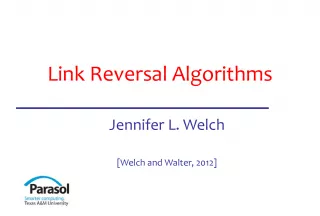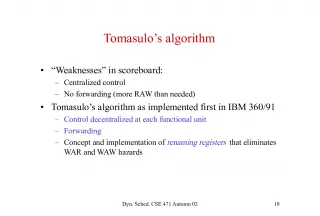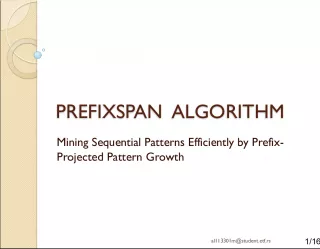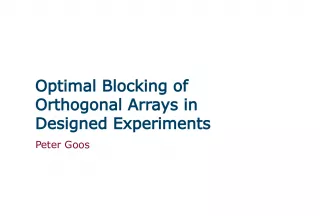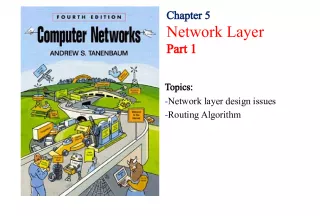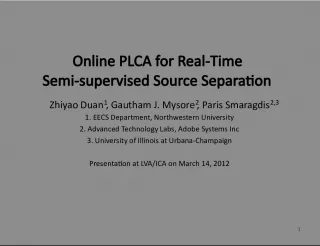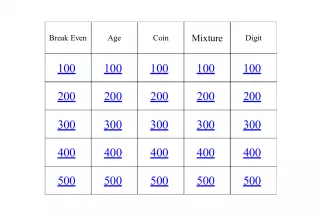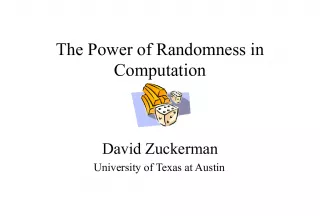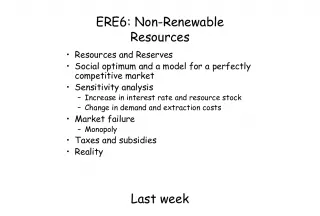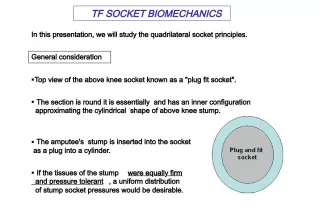Optimal Coin Payment using Greedy Algorithm
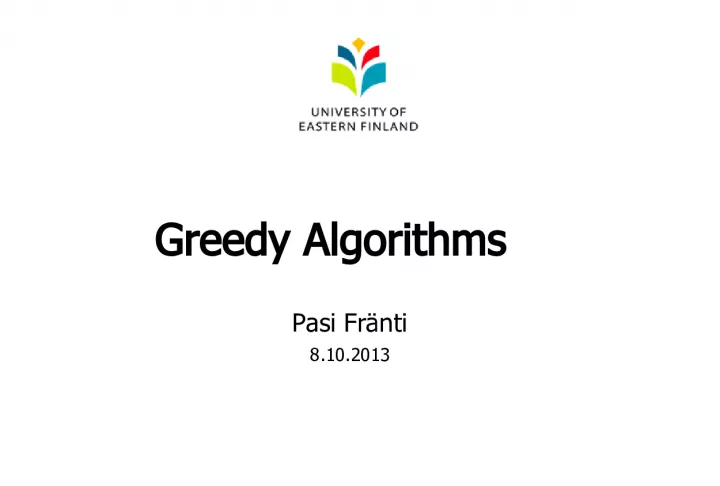

This article talks about the greedy algorithm and how it helps solve the coin problem to pay a required amount. It discusses the minimum spanning tree, generalized knapsack problem, and traveling salesman problem. Two coin sets with different amounts are used to illustrate the optimal solution.
- Uploaded on | 0 Views
-
 jaiden38
jaiden38
About Optimal Coin Payment using Greedy Algorithm
PowerPoint presentation about 'Optimal Coin Payment using Greedy Algorithm'. This presentation describes the topic on This article talks about the greedy algorithm and how it helps solve the coin problem to pay a required amount. It discusses the minimum spanning tree, generalized knapsack problem, and traveling salesman problem. Two coin sets with different amounts are used to illustrate the optimal solution.. The key topics included in this slideshow are Greedy algorithm, Coin problem, Minimum spanning tree, Generalized knapsack problem, Traveling salesman problem, Optimal,. Download this presentation absolutely free.
Presentation Transcript
1. Greedy Algorithms Pasi Frnti 8.10.2013
2. Greedy algorithm 1. Coin problem 2. Minimum spanning tree 3. Generalized knapsack problem 4. Traveling salesman problem
3. Task: Given a coin set, pay the required amount (36 snt) using least number of coins. Coin problem
4. 25 1 10 Coin problem Another coin set Amount to be paid: 30 Greedy: Optimal:
5. Blank space for notes
6. Minimum spanning tree When greedy works Needs problem definition! Tree = (no cycles) Spanning Tree = Minimum = (couple of examples with simple graph)
7. Prim (V, E): RETURN T Select (u,v) E with min weight S S {u,v}; P P {(u,v)}; E E\{(u,v)}; REPEAT Select (u,v) with min weight (u,v) E, u S, v S S S {v}; P P {(u,v)}; E E\{(u,v)}; UNTIL S=V Return P; Minimum spanning tree Prims algorithm
8. 136 170 315 148 78 231 234 120 89 131 109 116 86 246 182 216 110 117 199 121 142 242 79 191 178 191 126 149 170 51 112 90 163 59 143 73 63 53 27 135 105 58 116 72 79 Example of Prim
10. Proof of optimality General properties of spanning trees Spanning tree includes N-1 links There are no cycles Minimum spanning tree is the one with the smallest weights A B C A B C Remove Link BC Cycle No cycle
11. Proof of optimality Case: minimum link 2 A B C 2 1 2 A B C 2 1 Link AB is minimum Suppose it is not in MST Path A B must exist Add AB Adding AB we can remove another link (e.g. AC) Path A C exists All nodes reached from C can now be reached from B
12. Proof of optimality Induction step A B C 4 3 E D Replace CD by CE MST solved for Subset S Suppose CE is minimum connecting S outside Path D E must exist and is outside S
13. Proof of optimality Induction step A B C 4 3 E D MST solved for Subset S Path D E still exist as before All nodes reachable via D can now be reached via C D
14. Source of data just for fun
15. 1. A // initially A is empty 2. for each vertex v V [ G ] // line 2-3 takes O ( V ) time 3. do Create-Set( v ) // create set for each vertex 4. sort the edges of E by nondecreasing weight w 5. for each edge ( u , v ) E, in order by nondecreasing weight 6. do if Find-Set( u ) Find-Set( v ) // u & v on different trees 7. then A A {( u , v )} 8. Union( u , v ) 9. return A Total running time is O ( E lg E ). Minimum spanning tree Kruskals algorithm Needs revisions: - Remove numbers - Change terminology
16. Cardiff Sheffield Nottingham Oxford Southampton Bristol Shrewsbury Liverpool Aberystwyth B/ham Manchester 50 40 40 30 80 70 80 50 90 50 110 70 120 110 70 100
17. Cardiff Sheffield Nottingham Oxford Southampton Bristol Shrewsbury Liverpool Aberystwyth B/ham Manchester 50 40 40 30 80 70 80 50 90 50 110 70 120 110 70 100
18. Cardiff Sheffield Nottingham Oxford Southampton Bristol Shrewsbury Liverpool Aberystwyth B/ham Manchester 50 40 40 30 80 70 80 50 90 50 110 70 120 110 70 100
19. Cardiff Sheffield Nottingham Oxford Southampton Bristol Shrewsbury Liverpool Aberystwyth B/ham Manchester 50 40 40 30 80 70 80 50 90 50 110 70 120 110 70 100
20. Cardiff Sheffield Nottingham Oxford Southampton Bristol Shrewsbury Liverpool Aberystwyth B/ham Manchester 50 40 40 30 80 70 80 50 90 50 110 70 120 110 70 100
21. Cardiff Sheffield Nottingham Oxford Southampton Bristol Shrewsbury Liverpool Aberystwyth B/ham Manchester 50 40 40 30 80 70 80 50 90 50 110 70 120 110 70 100
22. Cardiff Sheffield Nottingham Oxford Southampton Bristol Shrewsbury Liverpool Aberystwyth B/ham Manchester 50 40 40 30 80 70 80 50 90 50 110 70 120 110 70 100
23. Cardiff Sheffield Nottingham Oxford Southampton Bristol Shrewsbury Liverpool Aberystwyth B/ham Manchester 50 40 40 30 80 70 80 50 90 50 110 70 120 110 70 100
24. Cardiff Sheffield Nottingham Oxford Southampton Bristol Shrewsbury Liverpool Aberystwyth B/ham Manchester 50 40 40 30 80 70 80 50 90 50 110 70 120 110 70 100
25. Cardiff Sheffield Nottingham Oxford Southampton Bristol Shrewsbury Liverpool Aberystwyth B/ham Manchester 50 40 40 30 80 70 80 50 90 50 110 70 120 110 70 100
26. Cardiff Sheffield Nottingham Oxford Southampton Bristol Shrewsbury Liverpool Aberystwyth B/ham Manchester 50 40 40 30 80 70 80 50 90 50 110 70 120 110 70 100
27. Input: Weight of N items { w 1 , w 2 , ..., w n } Cost of N items {c 1 , c 2 , ..., c n } Knapsack limit S Output: Selection for knapsack: {x 1 ,x 2 ,x n } where x i {0,1}. Sample input: w i ={1,1,2,4,12} c i = {1,2,2,10,4} S=15 Generalized Knapsack problem Problem definition
28. Will appear 2014 Generalized Knapsack problem
29. Semi-blank space
30. Traveling salesman problem GreedyTSP (V, E, home): RETURN T X[1] home; FOR i 1 TO N-1 DO Select (u,v) with min weight (u,v) E, u S, v S X[.. S S {v}; . UNTIL V {} Return something; Needs to be done
31. Greedy algorithms 1. Coin problem 2. Minimum spanning tree 3. Generalized knapsack problem 4. Traveling salesman problem Solved Not Solved Not



